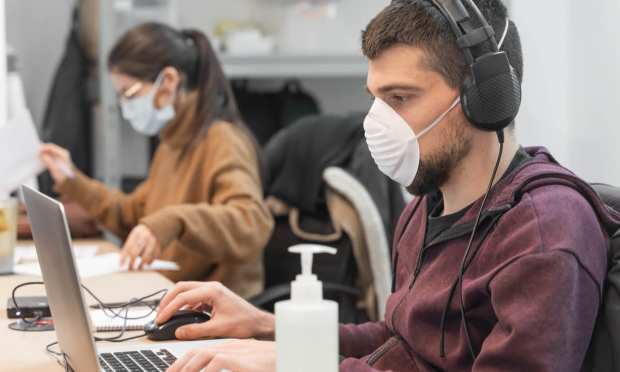COVID Surge Sends Americans Back To Work At Home In Another Economic Hit To Cities

Stagnant rates of U.S. employees returning to their offices is signaling another slowdown for the country’s economy, The Wall Street Journal (WSJ) writes.
Employees had begun returning after Labor Day in bigger numbers, but those numbers have started to fade out again, WSJ writes.
It comes at a time when the number of COVID-19 cases is surging in the country, leading many Americans to prefer working from home for now.
That, according to property analysts, has led to an uptick in empty floors of big office buildings, frustrating both companies and landlords that have put millions into developing safety protocols and modifying buildings.
As of Nov. 18, about a quarter of U.S. employees had returned to offices, according to security firm Kastle Systems, which works on monitoring access-card swipes in over 2,500 buildings in 10 of the biggest U.S. cities, WSJ writes. While that number is much higher than the amount of people in offices in April, where less than 15 percent were in the office, it’s flattened out from the 27 percent that were there in October.
Numerous companies have extended work-from-home offers for employees, but many of them also want to encourage workers returning to the office for easier collaboration.
The lower numbers of employees coming back to work has also dealt another blow to urban areas with more focus on office life, as customers are stopping less for gas or other random purchases to and from work. That includes less dining out for lunch, which hurts restaurants, and less road-toll revenues. A recent KPMG study estimated that the pandemic’s shift to people working from home will lead to around 270 billion fewer miles every year as they use their cars less — which will be good for the environment, but could have detriments for the auto industry.
Overall, cities’ populations in general are falling as people seek more spaced-out suburban lifestyles.
